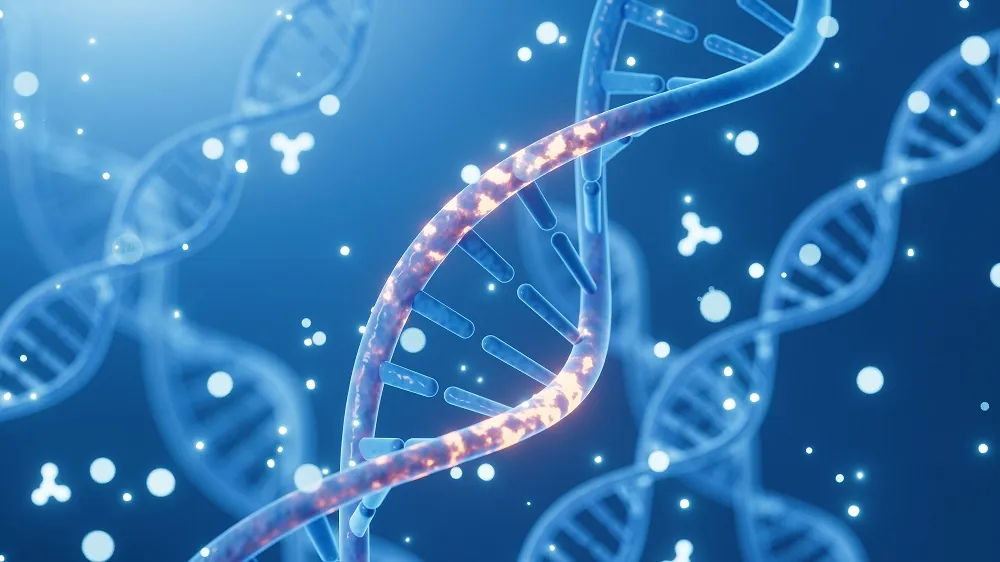An article preprint published on bioRxiv shows that a single OSKM treatment in early life provides lifelong benefits in mice.

Read More
A single reset versus lifetime resetting
The team chose a group of heterozygous progeric mice as a mouse model. These mice suffer from a single mutation of the Lamin A gene, which causes the nuclear lamina to deteriorate; most progeric mice used in these experiments have two of these genes. They were also genetically engineered to express OSKM upon the administration of doxycycline, as has been done in previous experiments.
The team tested an OSKM epigenetic reset on these mice in four different ways, in addition to a control group. One group received a constant, low dose of doxycycline in the drinking water, a second group received a high dose over a two-day-a-week cycle, the third group received a low dose for only two and a half weeks, and the fourth group received a medium dose for two and a half weeks. All of these interventions began at the age of two months.
The results were striking. As expected, the constant low-dose and lifetime cyclic dose groups lived much longer than the control group. The limited-time low-dose group did not live much longer, but the limited-time medium-dose group showed an interesting pattern; the mice who survived past the median age lived substantially longer than their unmodified counterparts.
The team also conducted a second test of non-progeric mice. The mice that received the single OSKM reset lived slightly, but noticeably, longer than their unmodified counterparts. Half of the treated mice lived to 125 weeks of age, while fewer than a quarter of the control group did.
While it is clearly more effective to have continuous OSKM resetting rather than a single epigenetic reset, these results show that the effects of just one epigenetic reset continue throughout the rest of the animal’s lifespan.
Cellular effects
The researchers claimed that their approach, in which OSKM is induced by a single allele, did not create iPSCs or induce teratomas; it youthened cells without causing them to revert back to a pluripotent state, a frequent concern of OSKM treatment. Instead, the researchers reported that, in skin fibroblasts, the treatment decreased DNA damage, decreased senescence, and increased autophagy. It also doubled the number of mitochondria per cell.
As expected of an epigenetic treatment, it changed the gene expression of mice in many ways, but the pathways it affected were not all expected. Genes related to organ and tissue development were affected, such as muscle, bone, and kidney tissue, but gene expression related to age-related diseases, such as fibrosis, osteoarthritis, and dilated cardiopathy, was also affected.
Physical effects
After analyzing the cells, the researchers then set out to see what effects these gene expression alterations had on animals. In later life, mice gain fat mass and lose lean mass, but mice that had received a single OSKM treatment, induced by the medium dose of doxycycline, lost considerably less muscle and gained considerably less fat than untreated mice.
Skin and bone integrity were also positively affected. Heterozygous progeric mice that had received the reset had skin that was 40% thicker than their untreated counterparts at 8 months; the underlying fat and smooth muscle were a full 120% thicker. The effects on bone were less stark, but the treated mice enjoyed less osteoarthritis and stronger bones than untreated mice. Lung, spleen, and kidney tissue were also positively affected.
All of these long-lasting effects, which continued over the mice’s lifespan, were from a single intervention at a young age.
Abstract
Forced and maintained expression of four transcription factors OCT4, SOX2, KLF4 and c-MYC (OSKM), can reprogram somatic cells into induced Pluripotent Stem Cells (iPSCs) and a limited OSKM induction is able to rejuvenate the cell physiology without changing the cell identity. We therefore sought to determine if a burst of OSKM might improve tissue fitness and delay age-related pathologies in a whole animal. For this, we used a sensitive model of heterozygous premature aging mice carrying just one mutated Lamin A allele producing progerin. We briefly treated two months-young heterozygotes mice with OSKM and monitored their natural age-related deterioration by various health parameters. Surprisingly, a single two and a half weeks reprogramming was sufficient to improve body composition and functional capacities, over the entire lifespan. Mice treated early in life had improved tissue structures in bone, lung, spleen, kidney and skin, with an increased lifespan of 15%, associated to a differential DNA methylation signature. Altogether, our results indicate that a single short reprogramming early in life might initiate and propagate an epigenetically related rejuvenated cell physiology, to promote a healthy lifespan.
Conclusion
The usual caveats apply: this is a preprint mouse study that has not yet been subjected to peer review, and most of the studied mice were progeric. Additionally, while the genetic alteration and study protocol were apparently sufficient to prevent the mice’s cells from experiencing the usual symptoms of OSKM overactivation (induction of pluripotency, teratoma formation), it is not at all clear how this could translate into a therapy.
However, these are still inspiring and significant results. If an epigenetic reset could possibly be safely delivered to human beings, such an intervention could potentially have significantly positive downstream effects even with irregular or occasional treatment. If this turns out to be the case, we may see a future in which an epigenetic reset therapy is regularly delivered in a clinical setting in order to stave off age-related diseases.








